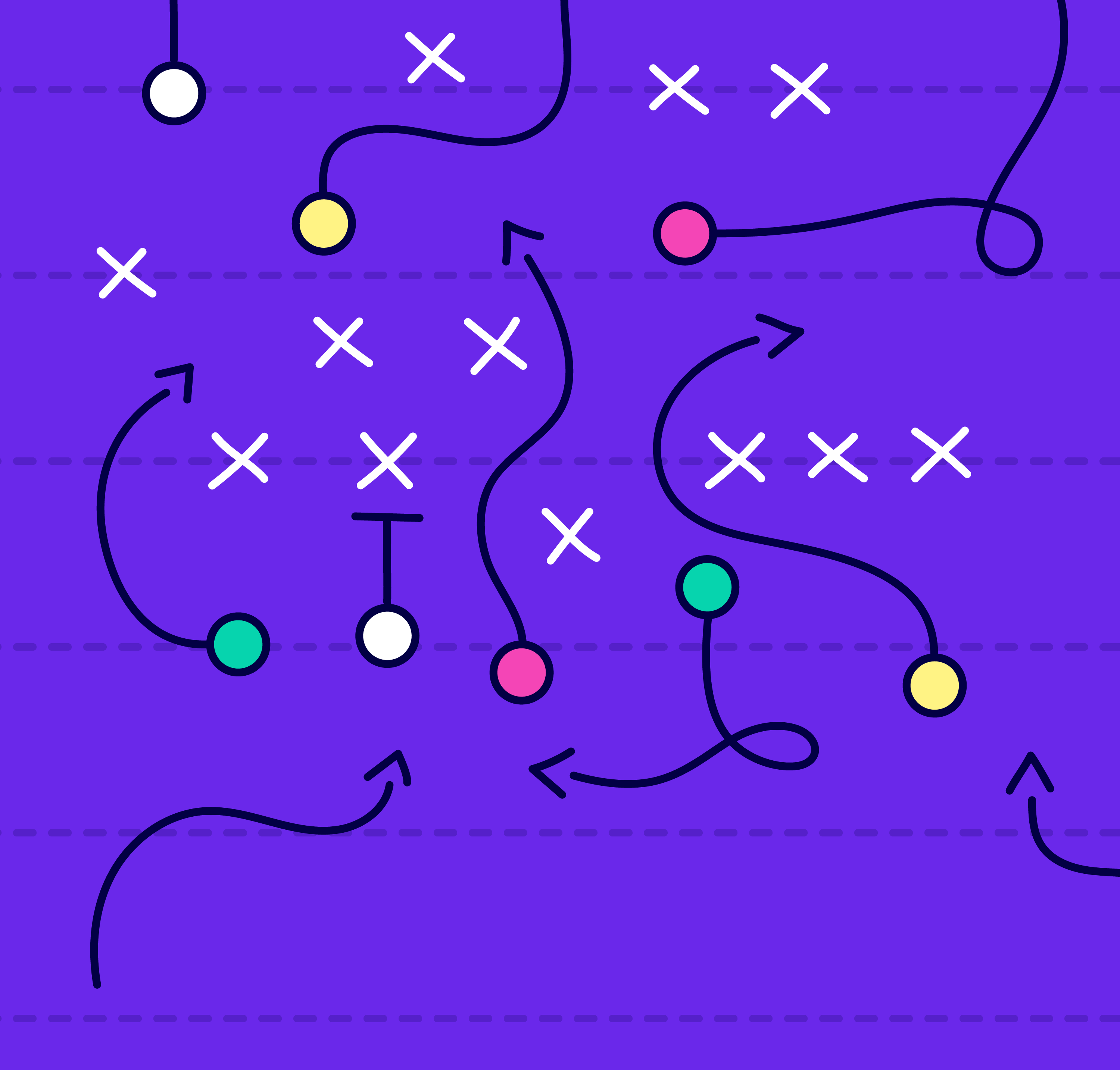
Articles
GrowthForce Has 5 Tips For Scaling Your Small Business
February 10, 2022

GrowthForce is an outsourced accounting department that helps companies go from manual spreadsheets to data-driven growth. Founded in 2004, their mission is to help clients take their finances and accounting from a weakness to a strength.
CEO and founder Stephen King started GrowthForce after selling his first business during the dot-com boom. Today, he has 56 employees. And he’s continually focused on even bigger growth goals, like building out the next level of management and offering profit sharing.
But how exactly did Stephen grow his company from a few to over fifty employees?
We invited Stephen on the Fastest Growing Companies podcast to ask him just that.
In the episode, Stephen shared critical insights he picked up while building his company over the last 18 years. And above all, though, he credits their ability to hire and maintain a high-functioning team as a major contributor to their fast-paced growth. Here are 5 tips Stephen has for companies on looking to grow and scale their business:
1. Hire a high performing team that stays long term
There are countless bookkeeping and accounting companies in the world. But not many have scaled their business like Stephen has at GrowthForce. He says the success comes down to one fundamental lesson: people who drive profits.
“I learned the hard way that you need both a human capital strategy and a financial management strategy to achieve success,” Stephen shared. “Because [businesses that thrive] have built a high-performing team that stays together for a long time.”
In other words, the best tool for your growing company is a passionate team. And Stephen even believes it will lead to longer, more profitable client relationships.
“When [employees] stay a long time, clients stay a long time.”
<blockquoteauthor>Stephen King, CEO and founder at GrowthForce<blockquoteauthor>
Ultimately, your employee experience bleeds into the customer experience, because it’s your front-line employees who dictate how your customers are treated. And that means if you have a happy, engaged, and hard-working team, you’ll also have equally satisfied clients.
But according to Stephen, you have to know why your business exists in the first place to hire the best employees. Otherwise, there’s no direction for who you choose to join your team.
“The riches are in the niches,” Stephen explained, “You can’t serve everybody. And you can’t be all things to all people, so you need your mission, vision, and values [to hire people who align with your company].”
Meaning, it might be time to review your mission statement and vision. Think about your big goals. And when you hire new people, know that you're hiring the best possible candidates (whose career aspirations align with your goals) so they can help you move toward that growth.
2. You can teach skills but not values
Once you know your mission, vision, and values, it’s much easier to find and hire people who align with your company culture, which Stephen believes is much more important than hiring someone based solely on their skills.
“Make sure that everybody you bring on has the same values and beliefs. [Because] you can teach skills, but you can’t teach accountability.”
According to Stephen, you need to understand your best employees deeply. That way, you can define the ideal person you’re looking to hire and subsequently, look for people who can provide the same kind of work ethic.
He says to ask yourself, “Who’s the person who epitomizes the kind of values I’d like to repeat?”
For Stephen, his ideal employees were passionate about helping small businesses with their services. They were thankful to do the work while pursuing ventures for their own growth. And they were always true to their word and acted as team players.
Once Stephen realized who his "A" players were, he built a high-performing team by hiring more people like them. “We literally built our core values around the behaviors of the people we love the most,” he told us. As a result, his team is aligned around values and always delivers.
3. Recruiting is marketing
According to Stephen, recruiting is not an HR function. It’s a marketing function. Because he believes your recruits are the most important prospects you’ll ever sell to.
“When you close a deal with one 'A' player, it’s worth a hundred clients,” Stephen explained. So, he compares the recruiting process to a marketing campaign and recommends selling your opportunity to prospective employees like you’d sell a product to a potential buyer.
“You want to understand what’s valuable to [prospective employees], their pain, and your unique selling proposition to help address that pain.”
Once you’ve got someone interested in joining your company, treat them like the #1 prospect. And give them a preview of your (best) employee experience.
“When somebody shows up [at our office], there’s an itinerary for who they’re going to meet,” Stephen explains. And they’re always greeted with warmth and appreciation.
That way, prospects go home and reflect on their experience fondly. And hopefully, the delightful interaction leads to a long career with your company. Plus, when candidates have a great intro to your business, it impacts the rest of their time with you (if they decide to join). Think of it as the rule of first impressions — you never get second chance at them.
“That [positive] energy pervades them throughout [their careers],” Stephen shared. And because he maintained that approach to recruiting, he says it was much easier to build a high-performing and passionate team.
Plus, Stephen notes that you need to consider the 4 generations in the marketplace (Boomers, Gen Xers, Millennials, and Zoomers) and understand how each generation has different needs. Use those unique interests to build a more enticing offer.
4. Know your average client equivalent
Once Stephen honed in on who he hires and how he hires, it’s just a matter of filling slots (AKA positions) as they grow. And because they’re all passionate about crunching numbers, GrowthForce relies on a precise formula for knowing when to add a new role.
They call it the average client equivalent. And it works like this:
- First, figure out how many hours one client needs from each supporting role. For example, Stephen calculates hours for an accounting manager, staff accountant, and bookkeeper.
- Then, estimate how many clients this supporting team can handle.
- Next, use your sales forecast to know how many clients are coming in the next quarter and calculate the number of hours they will need.
- Finally, create new role slots as client work outgrows your team’s capacity. Stephen says you also need to consider how long it takes to ramp up employees and add that into your hiring timeline.
According to Stephen, “[Their average client equivalent] is all modeled. So we know how many prospects are at the top of the funnel, how many proposals are sent out, and how many closed deals we have every month.”
That way, they know exactly when to grow their team and how much time they have to do it. You can apply this to your business by figuring out your "average client equivalent" at the start of each quarter. Then, determine if you’re in a position to scale your business with new team members.
5. Align your leadership team and trust the process
We asked Stephen what helped him let go of his responsibilities as he grew the business, so he could delegate to others and (most importantly) trust them to get it done right. And in his response, he referenced one of our favorite authors at Trainual — Gino Wickman.
According to Stephen, Gino’s entrepreneurial operating system (or EOS) was a game-changer for how he ran his business. That's because EOS forces you to drill down to what matters most in your company. And then, it shows you how to align your leaders around those core functions.
For example: in the first step of the EOS process, Gino asks you define who you are as a business, who's your customer, and why you’re unique. Stephen refers to this step as “divine” because the results helped him align his leadership team (to the point where he could let go of his place in day-to-day operations).
“This is a one-page process where you define exactly what your mission, vision, values, and core processes are,” Stephen explained, “Then my COO, the management team, and I all get alignment around that.”
Stephen says this process has helped him let go as the overseer. He no longer worries whether everyone is doing what they’re supposed to do. Because they’ve all agreed (as a team) on what they’re going to do beforehand.
Plus, Stephen says that when you let your leadership team have equal input here, you might even end up with a stronger plan. But the most crucial piece? Documenting it in your business playbook.
“[How the business runs] is not necessarily what I want to do anymore. Because [my leaders] are 'A' players, and they’re smart. They actually change my mind, and we end up with a better plan because they own it.”
According to Stephen, it’s easier to trust the process once your playbook is fully defined. That way, you know that everyone is aligned and on the same page, and you have a high-performing team ready to deliver.
If there’s one thing you'll takeaway from this interview, it’s this: the magic sauce for every growing business is the people who drive the profits. Because it takes an engaged and high-performing team to continually execute and produce quality results.
Similar Blog Posts





.avif)





